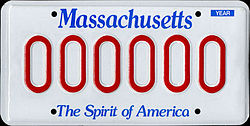UPDATE: New Process for Customer Printing Temporary Docs
Posted by MAIA on November 10, 2020
MAIA issued a Special Bulletin on 11/2/2020 about the RMV’s new central distribution process for certain plates and registrations ordered through the Registration Drop Off Centers. This notice updates and clarifies that information.
EXCEPTIONS: Please note that the information below does not apply to the following plates, which will NOT get a temporary registration and will still need to be picked up by the customer/runner: Commercial, Livery, Taxi, Bus, and Municipal.
RMV Update of 11/6/2020:
New Process for Customer Printing Temp Docs as of 11/2/20
To eliminate the need for individual customers to return to the RMV Registration Drop Off Centers to complete their registration transaction, eligible customers will be able to print their own temporary plate and/or registration from their myRMV account after payment is received. The permanent plates and/or registrations will be mailed to the customer’s address on record.
Who can print their own temporary plate?
If the customer has a Massachusetts Driver’s License, ID, or Learner’s Permit, their credential that starts with an “S” or “SA” can be used to log into their myRMV account. After payment is made, they can print their own temporary plates and registration. The permanent plates/registrations will be mailed to owners within 7 days.
Customers who do not have a Massachusetts assigned S/SA number will still need to pick up their plates/registrations at the Registration Drop Off Center. This applies both to transactions dropped off by individual customers and by commercial customers (such as agents and runners). For more information visit MAIA https://www2.massagent.com/publications/update-new-process-for-customer-printing-temporary-docs




